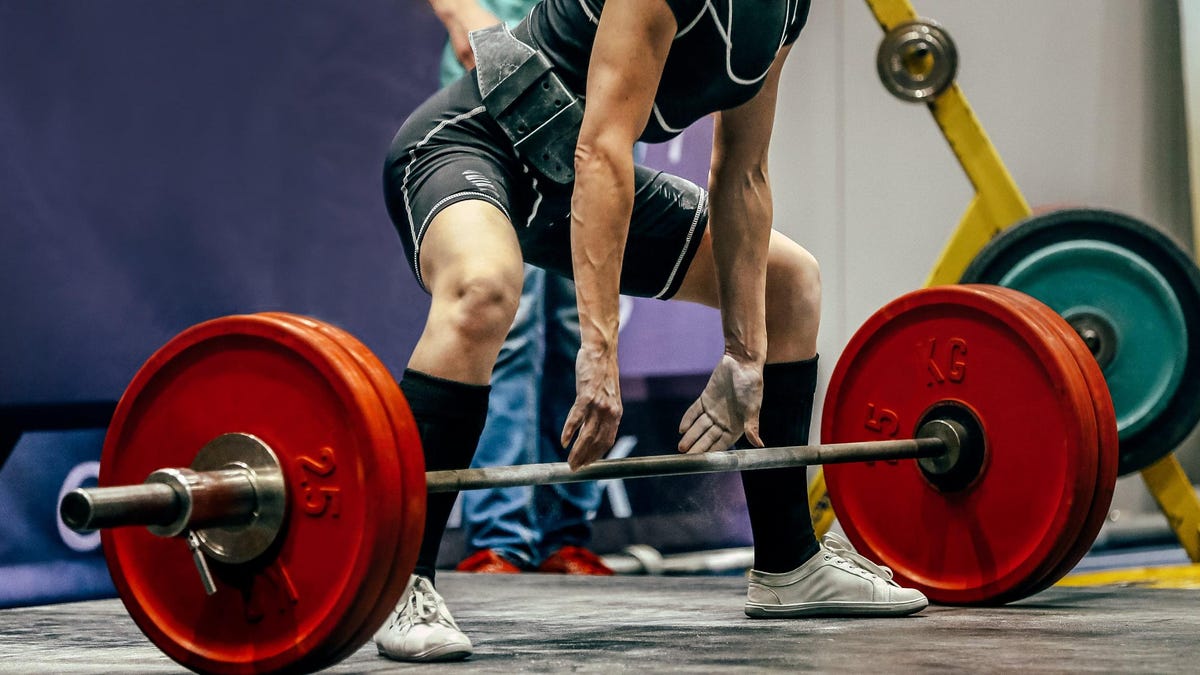
This video from John Paul Cauci describes a three-step process. First, you breathe in and pull the bar upwards until you hear the click where the bar meets the plates. Next, you hold that tension while moving your hips into position. Finally, you begin the lift immediately upon reaching that start position.
In this video from Juggernaut (part of a series on deadlift technique), Marisa Inda flexes her triceps to keep her arms long, takes a big breath in, and then engages her lats (the muscles at the sides of the back) until the bar feels like it’s hovering off the ground.
This video from Kabuki has you push your feet into the floor, pull your shoulders back, and finally “wedge” your hips into the chain of tension by bringing them forward until you feel tension in your legs.
Advertisement
Your own setup may feel like one of these, or like a mix. Or perhaps there’s another video or technique out there that speaks to you better. Whatever the specific steps, the idea is for your body and the bar to form a strong connection between the floor (where your feet push down) and the plates (which will be pulled upward by the bar). Then you begin the lift.
Think of towing something with a rope: you don’t want to yank suddenly on a loose rope. Instead, you want to pull the rope taut until you can feel that the two ends are connected; only then will you start pulling for real. In a deadlift, this might seem like a waste of effort (why pull before you pull?) but it actually saves energy in the end, because everything is lined up and ready to go.
Advertisement
How to know you’re pulling the slack out the right way
The simplest way to figure out how to generate tension, in my opinion, is the one-inch pull. Set up in the best way you know how, then lift the bar just one inch off the ground. Put it back down.
Advertisement
It’s helpful to record yourself doing this. How different does your body position look when you think you’ve set up properly, versus when the bar actually leaves the ground? Use these differences as clues for how to actually set up properly. If your hips are low in your setup but the bar won’t leave the ground until they’re higher, then try that higher hip position in your setup in the first place.
Sometimes I help people work on this by pausing every rep of their deadlifts after the weight leaves the floor: pull, pause, then continue the lift. Once they get the hang of that, we pause “at the click” (when the bar makes that clicking sound against the inside of the weight plate, but before it leaves the ground). That’s essentially the same thing as pulling the slack out, but it’s sometimes easier to think of it as a pause in a larger lift rather than a separate step.
Advertisement
Ultimately, the transition from getting tension to actually lifting the bar should feel like a smooth but quick ramping up of force, not like a lackadaisical setup followed by a sudden yank. It will take time to dial in your own technique for setting up and generating tension, but it’s time well spent.

Comentarios recientes